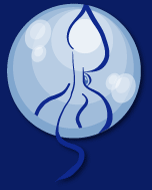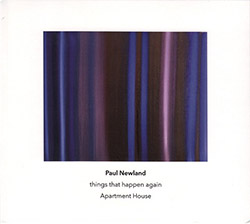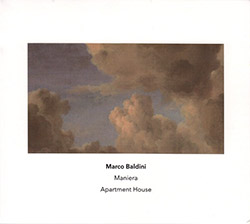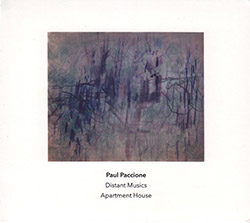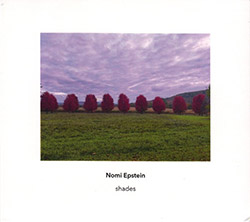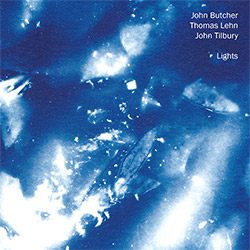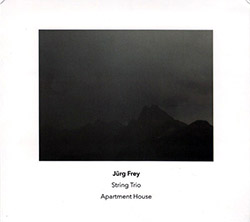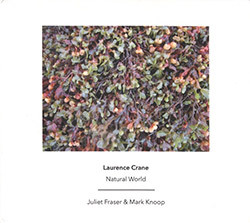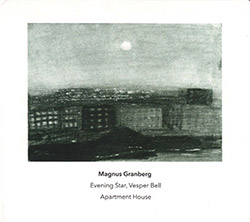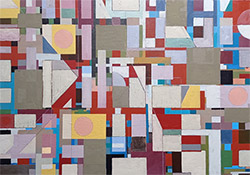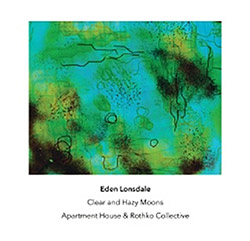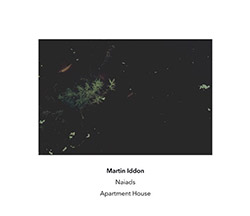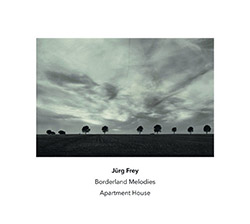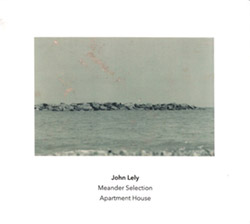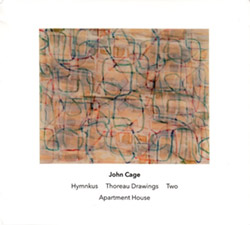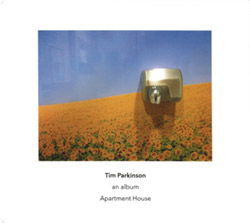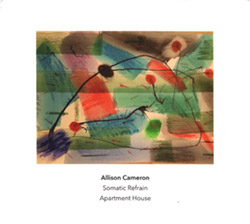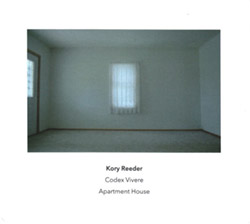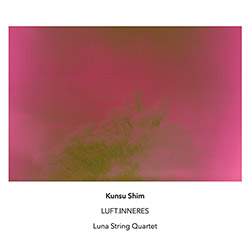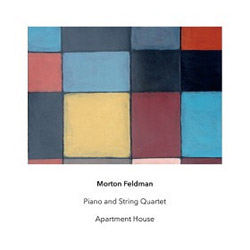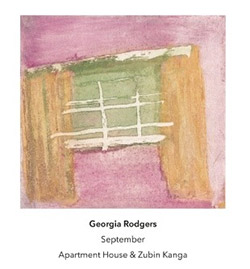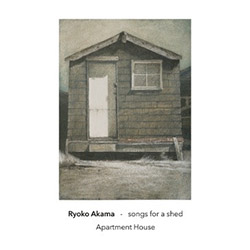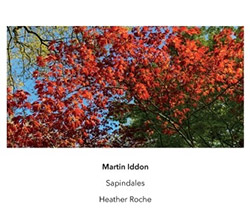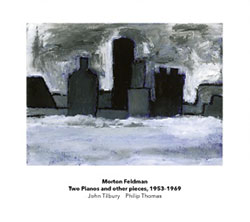
"Two Pianos" is one of Morton Feldman's most experimental and radical works, performed here by John Tilbury & Philip Thomas; plus lesser known works including 'Piece for Four Pianos', 'Between Categories', 'False Relationships and the Extended Ending' and 'Two Pieces for Three Pianos'.
In Stock
Quantity in Basket: None
Log In to use our Wish List
Shipping Weight: 3.00 units
Sample The Album:
John Tilbury-piano
Philip Thomas-piano
Catherine Lewis-piano
Mark Knoop-piano
Anton Lukoszevieze-cello
Seth Woods-cello
Mira Benjamin-violin
Linda Jankowska-violin
Rodrigo Constanzo-percussion
Taneli Clarke-percussion
Naomi Atherton-horn
Barrie Webb-trombone
Click an artist name above to see in-stock items for that artist.
Label: Another Timbre
Catalog ID: at81x2
Squidco Product Code: 20021
Format: 2 CDs
Condition: New
Released: 2014
Country: UK
Packaging: Cardboard Gatefold 3 Panels
Recorded at St. Paul's Hall in Huddersfield University on June 27th, 28th and 29th, 2014 by Simon Reynell.
"A double CD of landmark recordings of works for multiple pianos, and pianos and instruments from what is arguably the most radical and experimental period of Morton Feldman's development as a composer. The album includes several pieces that have been performed and recorded very rarely, including 'Piece for Four Pianos', 'Between Categories', 'False Relationships and the Extended Ending' and 'Two Pieces for Three Pianos'. Performed by a stellar group of musicians led by pianists John Tilbury and Philip Thomas, this is an essential addition to the Feldman discography."-Another Timbre
Notes on Morton Feldman's 'Two Pianos and other pieces' by Philip Thomas
The music featured on these two discs testifies to the intensity of Feldman's experimentation with notation and sound during the 1950s and 60s. Considering the works chronologically one senses the composer trying out, teasing and developing means of notation to get close to his desired elasticity of time and duration. His experiments with indeterminacy of pitch - whereby Feldman specified only the register (high, middle, low) of sound rather than the exact notes themselves - do not feature here; after trying this method in a series of works in the early 1950s he abandoned the technique, with a few notable exceptions straying into the 1960s, because he was too 'attached' to the pitches he wanted.
All notes are specified exactly in the pieces on these discs - the experiments are instead with duration and time. Durations of sounds are variously free, dependent upon the decay of the sound, worked out in coordination with other players, as well as at times exactly and complexly notated within a specific tempo. Sometimes the freedoms of notating time are worked through in combination with listening closely to the sounds of other players, allowing patterns to emerge without forcing the situation, whilst at other times different ways of notating time are combined, creating false alignments in the score and thus placing greater emphasis upon the individual performer's journey.
The piano is an inherently indeterminate instrument - any given note will have a very different afterlife dependent upon the touch of the performer, the register of the note, the type and size of the piano, the acoustic of the space in which the piano is situated, and so forth. Put six or seven of these notes together as a chord and the situation becomes complex. In all these pieces Feldman specifies the dynamics to be quiet, or as quiet as possible, or very quiet. However the notion that Feldman's music is 'about' quiet-ness is a misconception: the subject is sound, and in order for that subject to be properly attended to those sounds are quiet. The range of pieces presented here depict very many different types of quietness - from the delicate sounds of Piano Three Hands and Piano Four Hands to the massed complexities of Two Pieces for Three Pianos. Quietness in Feldman's piano music is a performance instruction which is everything to do with touch and the desire to really hear the instrument. As such these recordings are a celebration of the piano (its tone and its decay) and piano playing, for all its frustrations and challenges - an instrument which is at the heart of Feldman's music.
The earliest work recorded here is Intermission 6 (1953), for one or two pianos. The score consists of a single page of music across which are scattered fragments: single notes, chords, the occasional 'grace' note, using the range of the keyboard, all redolent of Feldman's harmonic and pitch sensibility. The performers move through these in any order, a rare freedom within Feldman's music, and one which he was not to make use of again.
Piece for 4 pianos (1957) introduces a notational and formal procedure which proved to be considerably more fruitful, influencing works composed even twenty years later. All four pianists read from the same single page of score but move through it at their own pace. Thus the sequence of sounds remains constant but the duration of each sound is entirely free (within the parameter of 'slow'). The resultant shimmering effect, as the four pianists variously play the same chord, sometimes with reiterations, pre-empts aspects of later minimalism, and indeed the performance process is not entirely dissimilar from that of Terry Riley's In C composed a mere seven years later.
Two Pianos (1957) and Piano Four Hands (1958) were composed within eighteen months of Piece for 4 pianos. The former follows exactly the same procedure as Piece for 4 pianos whilst Piano Four Hands assigns different material to each pianist, but maintains the principle of moving through the material independently. Piano Three Hands, also composed in 1957, is distinct, consisting of regular, albeit slow, moving events, recalling an earlier work for solo piano, Piano Piece 1952.
A group of five works, each with the title Durations, composed during 1960-61, explore this compositional device further and to great effect. Yet at the same time Feldman was exploring other ways of dealing with duration and time, perhaps the result of unsatisfactory performances of these other works. In solo works he investigated options for making use of stemless noteheads, combined with pauses, to obtain a music free of metred time, though in some works combining this technique with more strictly notated music, as if to compare resultant performances of both notations.
In ensemble works he combined the stemless noteheads with a means of notating sequences of sounds in relation to other instruments, so that the end of one instrument's sound cues the beginning of another instrument's sound. It is quite possible that Feldman was in this way influenced by the new 'cue-ing' notations of his friend Christian Wolff, in pieces such as Duet II (1961) and For Five or Ten People (1962). Works featured on these recordings notated in this way are De Kooning (1963), Vertical Thoughts I (1963) and Four Instruments (1965), each of which are characterised by a sparseness of sound due to the predominance of sounds played in sequence rather than as vertical masses.
Two Pieces for Three Pianos (1966) is a transitional and quite remarkable work. The first piece combines two different notation types: the first and second pianos read only stemless noteheads, with the instruction to play each event once the decay of the previous event has begun; the third piano part is fully notated with very precise durations, metre and ever-changing tempi. Each player follows their own part dogmatically - there is very little room for listening and responding to the other players. The texture is extremely dense, consisting of predominantly thick chromatic chords in all three pianos which gradually thin out toward the end of the piece. There is no coordination and the piece thus ends sparsely as the pianos 'drop out' and the first two pianists play high and delicate events. The second piece is more coordinated, mostly using the form of notation and sequence used in Vertical Thoughts I, combining stemless noteheads with occasional metred and rhythmically precise notation.
False Relationships and the Extended Ending (1968) and Between Categories (1969) are perhaps the two most extraordinary works featured here if considering the notational characteristics alone. Feldman divides the ensemble into two smaller ensembles: violin/trombone/piano and cello/chimes/2 pianos (toward the end subdivided further as chimes/piano and cello/piano) in False Relationships...; and two equal ensembles of violin/cello/chimes/piano in Between Categories. The two ensembles in both pieces follow a mixture of notations, variously strictly notated, with changing tempi, and stemless noteheads, played in sequence and as simultaneities. Whilst the ensembles are notated synchronously on the page, one above the other, at any point in time one ensemble may actually be reading from one, two or possibly three pages apart from the other. Even when both ensembles look on the page as if they are notated similarly, with matching bar lines, on closer look the reader will notice that the time signatures and tempi markings of one ensemble are entirely different from the other. It is as if Feldman is playing some kind of visual game which bears no relation to the aural result. However, the music is very carefully thought out, and where one ensemble appears to be significantly adrift from the other in terms of the notated score, it is more than likely that the gap will close at some later point and the ensembles become more aligned aurally. Whilst none of this is apparent to the listener, at the same time it is clear that there are some very definite periods of harmonic synchronicity, and other times where the ensembles feel to be quite separate. Likewise, certain ideas and pitches are tossed between ensembles, giving the impression of precisely coordinated events when in actuality the detail of such imitative patterns is the result of performance-based chance, albeit one which occurs within a meticulously planned framework.
Feldman was not to return to these techniques. The works which followed, in the early 1970s, are more traditionally and simply notated, serving different compositional aims and agendas. The complexity of these late 1960s works is echoed in the extraordinary and bafflingly notated works of the late 1970s and early 1980s. Feldman's experiments with notation, decay, duration and ensemble continued until the end of his life, but always with an attentive ear and technical mastery which heightens the ungraspable and transitory qualities of sound."-Philip Thomas
John Tilbury-piano
Philip thomas-piano
Catherine Lewis-piano
Mark Knoop-piano
Anton Lukoszevieze-cello
Seth Woods-cello
Mira Benjamin-violin
Linda Jankowska-violin
Rodrigo Constanzo-percussion
Taneli Clarke-percussion
Naomi Atherton-horn
Barrie Webb-trombone
Artist Biographies
• Show Bio for John Tilbury "John Tilbury (born 1 February 1936) is a British pianist. He is considered one of the foremost interpreters of Morton Feldman's music, and since 1980 has been a member of the free improvisation group AMM. Tilbury studied piano at the Royal College of Music with Arthur Alexander and James Gibb and also with Zbigniew Drzewiecki in Warsaw. 1968 he was the winner of the Gaudeamus competition in the Netherlands. During the 1960s, Tilbury was closely associated with the composer Cornelius Cardew, whose music he has interpreted and recorded and a member of the Scratch Orchestra. His biography of Cardew, "Cornelius Cardew - A life unfinished" was published in 2008. Tilbury has also recorded the works of Howard Skempton and John White, among many others, and has also performed adaptations of the radio plays of Samuel Beckett. With guitarist AMM bandmate Keith Rowe's electroacoustic ensemble M.I.M.E.O., Tilbury recorded The Hands of Caravaggio, inspired by the painter's The Taking of Christ {1602). In this live performance, twelve of the members of M.I.M.E.O. were positioned around the piano in a deliberate echo of Christ's Last Supper. The thirteenth M.I.M.E.O. member (Cor Fuhler) is credited with "inside piano" as he interacted and interfered with Tilbury's playing by manipulating and damping the instrument's strings, essentially doing piano preparation in real time. Critic Brian Olewnick describes the album as "A staggering achievement, one is tempted to call The Hands of Caravaggio the first great piano concerto of the 21st century." Another notable recent recording of Tilbury's was Duos for Doris (like The Hands of Caravaggio also on Erstwhile Records), a collaboration with Keith Rowe. It is widely considered a landmark recording in the genre of electroacoustic improvisation (or "EAI"). In 2013 he collaborated with artist Armando Lulaj in FIEND performance at the National Theatre of Tirana (Albania)." ^ Hide Bio for John Tilbury • Show Bio for Philip Thomas "Philip Thomas (b.1972, North Devon) specialises in performing new and experimental music, including both notated and improvised music. He places much emphasis on each concert being a unique event, designing imaginative programmes that provoke and suggest connections. He is particularly drawn to the experimental music of John Cage, Morton Feldman and Christian Wolff, and composers who broadly work within a post-Cageian aesthetic. In recent years he has been particularly associated with the music of Christian Wolff, giving the world premiere of his Sailing By in 2014 and Small Preludes in 2009, the UK premiere of Long Piano (Peace March 11), having co-edited and contributed to the first major study of Wolff's music, Changing the System: the Music of Christian Wolff, published by Ashgate Publications in 2010, and currently recording all of Wolff's solo piano music for sub rosa. He is an experienced performer of John Cage's music, having performed the Concert for piano and orchestra with both Apartment House and the Merce Cunningham Dance Company as well as most of the solo piano and prepared piano music, including a unique 12-hour performance of Electronic Music for piano He has commissioned new works from a number of British composers whose ideas, language and aesthetic have been informed in some ways by the aforementioned American composers, such as Stephen Chase, Laurence Crane, Richard Emsley, Christopher Fox, Bryn Harrison, John Lely, Tim Parkinson, Michael Parsons, and James Saunders. In recent years Philip has pursued a passion for freely improvised music, after significant encounters with the music of AMM and Sheffield-based musicians Martin Archer, Mick Beck and John Jasnoch. He has worked with improvisers in a variety of contexts and recently devised a programme of composed music by musicians more normally known as improvisers as well as others who have been influenced by improvisation in some form. This led to a CD release, Comprovisation, which featured newly commissioned works by Mick Beck, Chris Burn and Simon H Fell. Other CD releases include music by Martin Arnold, Laurence Crane, Christopher Fox, Jürg Frey, Bryn Harrison, Tim Parkinson, Michael Pisaro, James Saunders, Christian Wolff, as well as with improvisers Chris Burn and Simon H Fell. Philip is a regular pianist with leading experimental music group Apartment House, with whom he has performed in festivals across the UK and Europe. He has also performed with the Quatuor Bozzini, and in duos with Mark Knoop, Ian Pace and John Tilbury (piano duet and two pianos) and James Saunders (electronics). In 1998 Philip was awarded a PhD from Sheffield University in the performance practice of contemporary piano music. Between 2000 and 2005, he was Head of the Sheffield Music School whilst pursuing an active performing and teaching career. He joined the staff team at the University of Huddersfield in 2005, and became Professor of Performance in 2015. Philip is one of the Directors of CeReNeM, the University's Centre for Research in New Music. He continues to live in Sheffield, where he premieres the majority of his programmes, with his wife Tiffany and children Naomi and Jack." ^ Hide Bio for Philip Thomas • Show Bio for Mark Knoop "London based pianist and conductor Mark Knoop is known for his fearless performances and individual interpretations. He has commissioned and premièred countless new works and worked with many respected composers including Michael Finnissy, Joanna Bailie, Bryn Harrison, Bernhard Lang, Matthew Shlomowitz, Jennifer Walshe and Steven Kazuo Takasugi. His versatile technique and virtuosity also brings fresh approaches to the standard and 20th-century repertoire. Mark performs regularly throughout Europe, the United Kingdom and Australia and in New Zealand, South Korea, Mongolia, United States of America, Canada and at festivals including Transit (Leuven), Ultima (Oslo), Huddersfield, London Contemporary Music Festival, Borealis (Bergen), Spor (Århus), Athelas (Copenhagen), and MaerzMusik (Berlin). He performs with various ensembles including Plus-Minus (London/Brussels) and Apartment House (London), and has conducted EXAUDI (London), Scenatet (Denmark), and London Sinfonietta. His recordings of music by John Cage, Richard Beaudoin, Karlheinz Stockhausen, Peter Ablinger, and David Lumsdaine have been critically acclaimed." ^ Hide Bio for Mark Knoop • Show Bio for Anton Lukoszevieze "Cellist Anton Lukoszevieze (born 1965 in the UK) is one of the most diverse performers of his generation and is notable for his performances of avant-garde, experimental and improvised music. Anton has given many performances at numerous international festivals throughout Europe and the USA (Maerzmusik, Donaueschingen, Wien Modern, GAS, Transart, Ultima, etc.etc.). He has also made frequent programmes and broadcasts for BBC Radio 3, Danish Radio, SR2, Sweden, Deutschland Rundfunk, WDR, Germany and ORT, Austria. Deutschlandfunk, Berlin produced a radio portrait of him in September, 2003. Anton has also performed concerti with the City of Birmingham Symphony Orchestra at the 2001 Aldeburgh festival and the Netherlands Radio Symphony Orchestra. He has collaborated with many composers and performers including David Behrman, Alvin Lucier, Amnon Wolman, Pierre Strauch, Rytis Mazulis, Karlheinz Essl, Helmut Oehring, Christopher Fox, Philip Corner, Alvin Curran, Phill Niblock and Laurence Crane, He is unique in the UK through his use of the curved bow (BACH-Bogen), which he is using to develop new repertoire for the cello. From 2005-7 he was New Music Fellow at Kings College, Cambridge and Kettles Yard Gallery. Anton is the subject of four films (FoxFire Eins) by the renowned artist-filmmaker Jayne Parker. A new film Trilogy with compositions by Sylvano Bussotti, George Aperghis and Laurence Crane premieres at The London Film Festival, October 2008. In November will premiere a new hour long work by Christopher Fox for cello and the vocal ensemble Exaudi commissioned by the Huddersfield Contemporary Music Festival and will also present new solo works for cello and live electronics. Anton is also active as an artist, his work has been shown in Holland (Lux Nijmegen), CAC, Vilnius, Duisburg (EarPort), Austria, (Sammlung Essl), Wien Modern, The Slade School of Art, Kettles Yard Gallery, Cambridge Film Festival and Rational Rec. London. His work has been published in Musiktexte, Cologne, design Magazine and the book SoundVisions (Pfau-Verlag, Saarbrucken, 2005). Anton Lukoszevieze is founder and director of the ensemble Apartment House, a member of the radical noise group Zeitkratzer and recently made his contemporary dance debut with the Vincent Dance Company in Broken Chords, Dusseldorf." ^ Hide Bio for Anton Lukoszevieze • Show Bio for Barrie Webb "Barrie Webb studied trombone with Vinko Globokar and conducting with Constantin Bugeanu. His performances include numerous international broadcasts and venues such as Suntory Hall, Tokyo and Carnegie Recital Hall, New York. His repertoire for solo trombone includes several concertos and a variety of international performance projects, beginning with The Japan Project (published on CD in 2002). He gained a Leverhulme Fellowship 2012-14 to fund four new recording projects, including Cain Katsumi Yokoyama's Requiem... ad Vitam Aeternam for solo trombone and Contemporary Trombone Classics, a retrospective of fifty years of contemporary trombone music (published in 2016). He enjoys parallel activity as conductor, working with professional orchestras, contemporary ensembles and with young musicians. In 2007 he was Guest Editor for the Contemporary Music Review, Vol.26, No.2: Contemporary Performance, contributing three articles: 'Performing Berio's Sequenza V', 'Richard Barrett's 'Imaginary' Trombone' and the autobiographical 'Partners in Creation'. He also completed a book chapter about the conducting methods of Constantin Bugeanu, published in 2014." ^ Hide Bio for Barrie Webb
7/10/2024
Have a better biography or biography source? Please Contact Us so that we can update this biography.
7/10/2024
Have a better biography or biography source? Please Contact Us so that we can update this biography.
7/10/2024
Have a better biography or biography source? Please Contact Us so that we can update this biography.
7/10/2024
Have a better biography or biography source? Please Contact Us so that we can update this biography.
7/10/2024
Have a better biography or biography source? Please Contact Us so that we can update this biography.
Track Listing:
CD 1
1. Two Pianos (1957) 9:59
2. Four Instruments (1965) 11:58
3. Vertical Thoughts 1 (1963) 7:57
4. Between Categories (1969) 11:44
5. Piece for Four Pianos (1957) 14:38
6. Piano Four Hands (1958) 7:44CD 2
Intermission 6 (1953) 3:06 De Kooning (1963) 12:52 Two Pieces For Three Pianos (1966) 1 8:01 Two Pieces For Three Pianos (1966) 2 9:56 Piano Three Hands (1957) 11:06 False Relationships And The Extended Ending (1968) 16:25 Two Pianos (Second Version) (1957) 9:23
Compositional Forms
Avant-Garde
Piano & Keyboards
London & UK Improv & Related Scenes
Staff Picks & Recommended Items
Top Sellers and Staff Lists for 2015
Instant Rewards
Search for other titles on the label:
Another Timbre.
